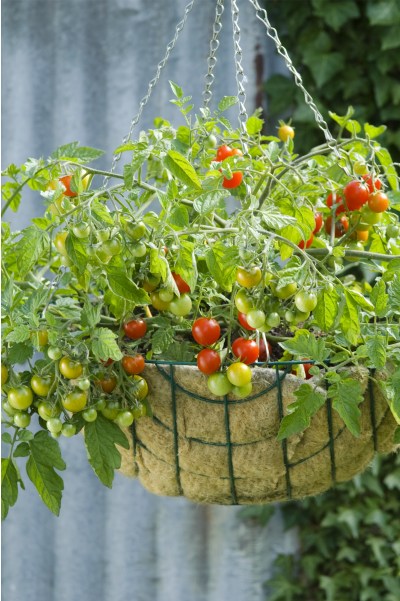
'Lizzano' tomato would work well in a hanging basket or a patio pot. Photo courtesy All-AmericaSelections.org
If there’s hope on the horizon for the gardening industry, it’s in food.
For the last few years, growers, garden centers, landscapers and gardeners have struggled with oppressive weather, a downturn in home construction and reduced discretionary income.
Edibles are the fastest growing segment in the gardening business, a trend that has remained steady or increased slightly over the past several years. The “keep it local” culture and concerns about food safety have been driving factors and so has taste. In our yards or community gardens, we control how we grow the food, such as our selection and use of products for insects or diseases.
Nearly 52 percent of the 68 million gardening households expect to grow edible plants — vegetable, herbs and fruits — this year, an increase of 11.3 percent, according to the most recent survey by the Garden Writers Association Foundation.
Edibles are the fastest growing segment in the gardening business, a trend that has remained steady or increased slightly over the past several years. The locovore culture and concerns about food safety are the driving factors and so is taste. We also control how we grow the food, such as use of chemicals for insects or diseases.
Where do we grow our food? The survey says about 35 percent of us grow plants in the ground, nearly 16 percent grow food in containers and nearly 31 percent use both methods.
For those who say they will be growing food in 2013, the top challenges are time (35.7 percent), insect and disease control (30.8 percent), wildlife control (26.0 percent), irrigation (23.6 percent) and cost (13 percent), the survey found.
A lot of angst and potential failure can be averted with a few steps:
• Start small in sunny space.
• Work in organic matter when digging the bed.
• Buy disease and insect resistant plants.
• Water and fertilize regularly.
• Keep weeds out.